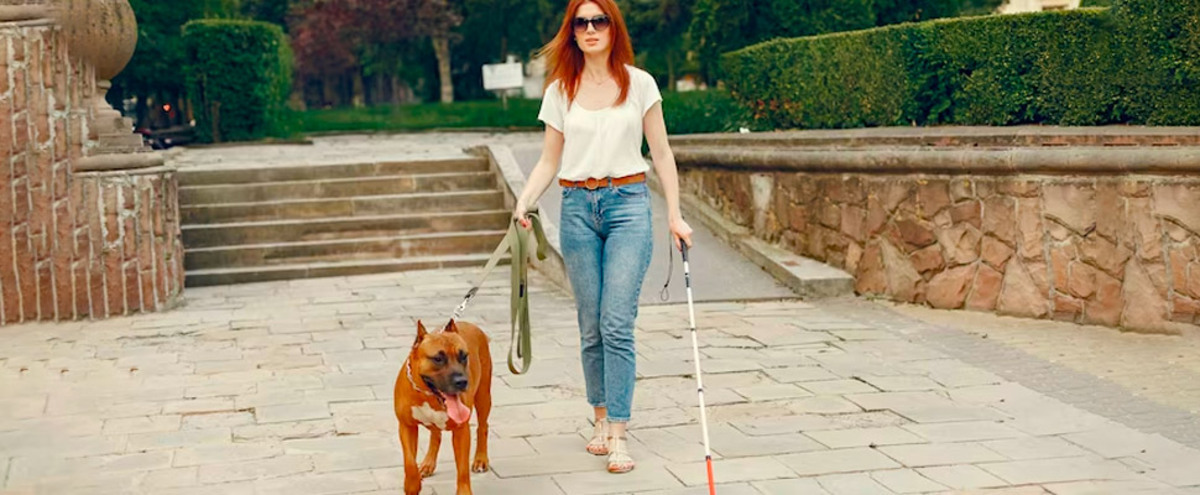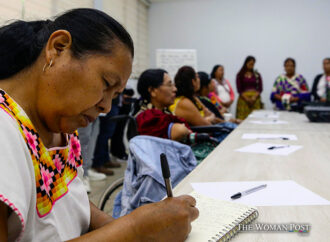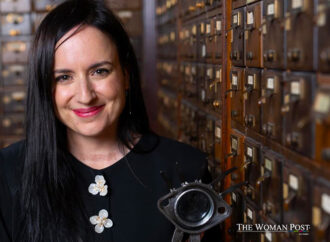We see him there supporting his owner. Imposing bearing and safe walking. He is aware of everything and everyone around him, recording movements, obstacles, and unforeseen events with eyes on permanent alert, ready to react if the case warrants it
It is the guide or guide dog that assists that totally or partially blind person who entrusts them with their safety and with whom they establish a "work" and emotional bond: they take care of each other, they live together, they are companions, they are friends.
The most common conditions among older women are dry eye, glaucoma, age-related macular degeneration, diabetic retinopathy, and cataracts. More WHO (World Health Organization) figures worldwide indicate that 6 out of 10 blind people are women.
Read more content like this at: thewomanpost.com
Some determinants of vision loss may also be malnutrition, obesity, or tobacco use.
Dog training to support visually impaired people is a great opportunity to get on with their life routines.
Not all breeds of dogs serve to "be the eyes" of a person who cannot see. Those chosen for this job are generally Golden Retrievers-very intelligent and sensitive-, German Shepherds-great ability to solve problems and very determined- and Labradors-for their adaptability to different environments and sociable character.
Since he is a puppy
No doubt the guide dog does an admirable job. Perhaps you think that to accompany a person who has totally or partially lost their sight, they only need to love their owner, know each other, and want to be together everywhere. The truth is that to master his work, a guide dog goes through hard and demanding training that involves hours of dedication, exercises, passing tests, rewards, and punishments that begin when he is still a puppy.
The matter can be compared to the degrees that we humans are passing to get into the university. The dog begins to prepare itself from the time it is a puppy, just 4 months old, but before being accepted it will have shown that it is suitable for the job due to the way it behaves and its temperament traits, which ideally should be passive. He will be tested on correctly following sit and lie-down commands, staying calm when no one is paying attention, and reacting quickly to sudden noises or stimuli.
The bark, the erection of the skin, the way they walk, their jumps and running speed, the ability to concentrate in the presence of other dogs, and the wagging of their tail are aspects included in the evaluation of the puppy. The results will tell if he will adapt to the guiding job that awaits him in the future.
Beating seats
The chosen puppy will live with his educational family during a time in which he will train to relieve himself and eat at specific times and adapt, without discomfort, to the harness and leash. He has provoked interaction with strangers all the time and his hearing is stimulated by noises of different frequencies, typical of various open and closed environments.
The dog is the eyes of the owner, and the life of this person is entrusted to his instincts and knowledge. That is why nothing is left to chance, not even the texture of the fur, which must be soft, or his health, since he cannot suffer from allergies or diseases that affect the heart, muscles, lungs, or bones.
When the guide dog is one year old, it enters the specialization period, the training is punctual: it will learn to walk on the left side of the person it assists, guide their steps in the face of variations that the path may have, and wait calmly if they appear pauses in progress.
Passing or failing each test is rewarded with prizes or punished without rides or the absence of expected snacks. A dog that learns to be a guide will never be cruelly reprimanded. At the end of the grades or courses that he passes, the animal will be able to apply his criteria to disobey orders from his owner if he decides that he could be in danger.
Reaching the goal
The time to meet the user who will enjoy his guide dog arrives and the meeting and coexistence for a few days is part of the final phase. The ways of being and acting must combine and adapt. The trained animal should never behave like a pet but rather like an assistant who will know the needs of that unique person: from now on they will work together, simulate situations, and learn mutual communication codes, weaving a strong bond that is not seen but felt.
The guide dog will be able to perform tasks that others would only trick to show to visitors: it will open doors; it will be able to operate elevator buttons and it will be able to help its owner put on clothes or use the bathroom. He will always walk next to him, never in front or behind, and he will understand his harness is pressed according to the needs of the person with whom he lives.
His retirement will come once he is 8 years old when, according to experts, the dog begins a decline in terms of the faculties required by the job of accompanying, supporting, and assisting a person with visual disabilities.
























Leave a Comment
Your email address will not be published. Required fields are marked with *